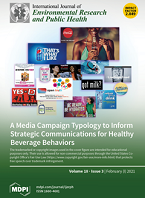Socioeconomic Status, Health and Life-Style Settings as Psychosocial Risk Factors for Road Crashes in Young People: Assessing the Colombian Case
- Autors: Andrea Serge, Johana Quiroz, Francisco Alonso, Luis Montoro (2021).
- Tipus de publicació: Article
- URL Publicacio: Socioeconomic Status, Health and Life-Style Settings as Psychosocial Risk Factors for Road Crashes in Young People: Assessing the Colombian Case
- Titol publicació (nom del llibre o de la revista): International Journal of Environmental Research and Public Health. Num.18(3), 886
-
Resum:
The social determinants of health influence both psychosocial risks and protective factors, especially in high-demanding contexts, such as the mobility of drivers and non-drivers. Recent evidence suggests that exploring socioeconomic status (SES), health and lifestyle-related factors might contribute to a better understanding of road traffic crashes (RTCs). Thus, the aim of this study was to construct indices for the assessment of crash rates and mobility patterns among young Colombians who live in the central region of the country. The specific objectives were developing SES, health and lifestyle indices, and assessing the self-reported RTCs and mobility features depending on these indices. A sample of 561 subjects participated in this cross-sectional study. Through a reduction approach of Principal Component Analysis (PCA), three indices were constructed. Mean and frequency differences were contrasted for the self-reported mobility, crash rates, age, and gender. As a result, SES, health and lifestyle indices explained between 56.3–67.9% of the total variance. Drivers and pedestrians who suffered crashes had higher SES. A healthier lifestyle is associated with cycling, but also with suffering more bike crashes; drivers and those reporting traffic crashes have shown greater psychosocial and lifestyle-related risk factors. Regarding gender differences, men are more likely to engage in road activities, as well as to suffer more RTCs. On the other hand, women present lower healthy lifestyle-related indices and a less active implication in mobility. Protective factors such as a high SES and a healthier lifestyle are associated with RTCs suffered by young Colombian road users. Given the differences found in this regard, a gender perspective for understanding RTCs and mobility is highly suggestible, considering that socio-economic gaps seem to differentially affect mobility and crash-related patterns
DOI: 10.3390/ijerph18030886ISSN: 1660-4601










